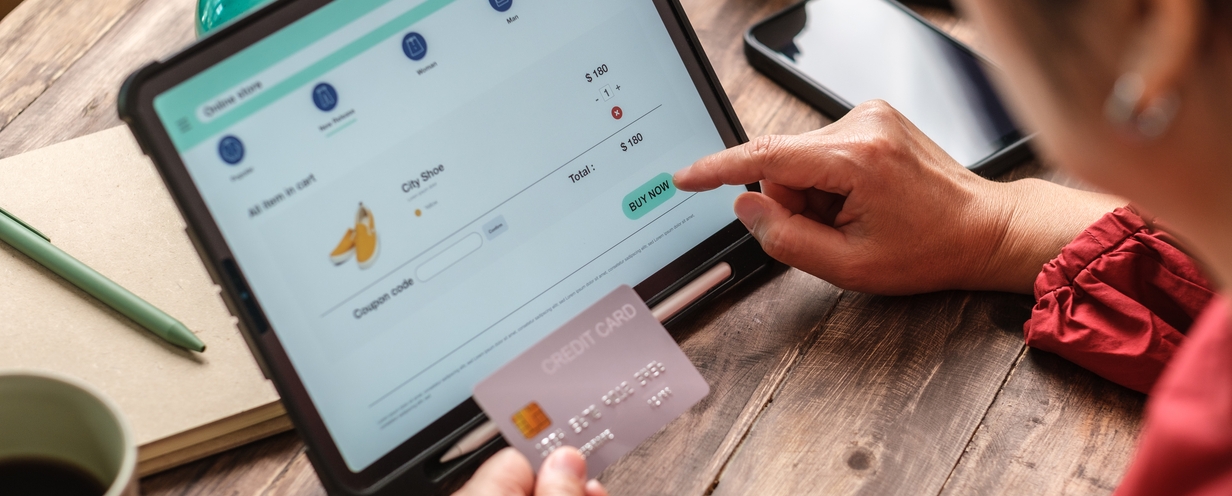
5 shopper behaviors your funnel isn’t built for (yet)

Modern consumers don’t follow predictable, linear paths. They jump between devices, pause mid-purchase, and often revisit journeys across days. Their expectations are high—and their tolerance for friction is low.
For businesses focused on accelerating growth and customer lifetime value, the key question becomes: Are we architecting experiences that align with the realities of modern shopper behavior?
This blog outlines five shopper behaviors that impact conversion performance, and how leading brands are reengineering digital journeys using real human insight.
1. Shoppers who treat your site like a search engine
Today’s shopper expects your internal search to operate with the intelligence and relevance of Google. When it doesn’t, frustration sets in quickly, and conversions vanish.
The problem: irrelevant results, empty state pages, filter fatigue, bad categorization, and inconsistent categorization all contribute to unnecessary friction. What should be a direct path to product discovery becomes a detour, or worse, a dead end.
In enterprise-scale environments, these misalignments become even more costly. For large product catalogs, poor search functionality can obscure inventory, inflate bounce rates, and create disconnects between marketing investment and on-site experience.
Precision search is no longer a nice-to-have feature. It’s a competitive necessity. Understanding how users phrase queries, combine filters, or navigate categories is foundational to aligning product discovery with intent.
How industry leaders address it:
- Conduct targeted usability studies to assess real search behavior
- Diagnose language mismatches, category confusion, and structural UX gaps
- Align search taxonomies to shopper language—not internal systems
2. Shoppers who bounce mid-purchase and come back later
Many buying journeys are interrupted, not abandoned. Customers often browse on mobile during downtime, then return hours later on a desktop to complete a purchase. But if their cart is gone or the experience feels disjointed, recovery rarely happens.
If your website doesn’t save your users’ session, cart, or browsing history, they start from scratch. That's why your funnel needs to reflect cross-device purchasing journeys,
According to research by Linnworks, 81% of shoppers want a seamless, cross-device shopping experience. This means that customers are doing their online shopping on both their mobile phones and desktops, switching between the two at their convenience.
81% of shoppers want a seamless, cross-device shopping experience
As a result, shopping experiences that fail to be consistent across devices risk creating unnecessary friction. Whether it’s a cart that doesn’t save, a product page that’s hard to rediscover, or a checkout process that doesn’t adapt to screen size, every lost detail can result in a lost sale. The most successful brands are those that make transitions feel seamless, building trust through consistency and continuity.
“When customers experience a brand without feeling the silos between departments, that’s when you know you’ve built a true omnichannel strategy,” said Kate MacCabe, founder of Flywheel Strategy, in Episode 164 of Insights Unlocked.
How industry leaders address it:
- Ensure session persistence across channels and devices
- Enable cross-device continuity to support real-life behavior
- Deploy smart nudges, reminders, and intuitive mobile UX to lower reentry friction
GUIDE
Optimizing conversion rates for retail and consumer brands
3. Shoppers who buy for someone else
Many holiday shoppers make purchases on behalf of others, including family, friends, or coworkers. This behavior continues throughout the year in occasions like birthdays, corporate gifts, or group buying scenarios.
Buyers who are shopping for others often face uncertainty: guessing sizes, juggling addresses, or navigating preferences they don’t fully know. Even confident shoppers can get stuck if the UX doesn’t provide cues or support tailored to proxy purchasing scenarios.
Gifting, proxy purchases, and collaborative buying are often overlooked in UX design. When the digital journey is built exclusively for the end-user, friction increases for those shopping on behalf of others.
This segment includes parents, spouses, assistants, and friends (each with distinct informational needs).
How industry leaders address it:
- Conduct moderated studies with proxy shoppers to surface blind spots
- Identify barriers around sizing, shipping, personalization, and contextual detail
- Add supportive features such as "Is this a gift?" options, delivery flexibility, and shared carts
4. Shoppers who read reviews first and trust those users over your brand
Review-hunting is a critical part of the decision journey. Instead of being told about a product through only product descriptions, shoppers gravitate towards user-generated content (UGC).
A study from Nielsen found that 88% of online shoppers trust recommendations from other users, particularly from people they know. On top of that, 50% more shoppers trust product recommendations than digital formats like banner ads, mobile ads, and SMS promotions, making them one of the most powerful levers for influencing purchase decisions.
In other words, user validation often carries more weight than branded messaging.
Yet the UX for customers to navigate through reviews on a sales page are frequently deprioritized or poorly executed. Hidden tabs, poor filters, or the presence of suspect reviews can destroy hard-earned trust.
How industry leaders address it:
- Optimize review visibility and filter functionality based on actual usage behavior
- Surface authentic UGC (photos, video, community commentary) to drive engagement
- Continuously test review layouts to identify signals of trust—and red flags that undermine it
5. Shoppers coming from social channels
Users who come from social channels, and who might be encountering your brand for the first time, expect a similar experience throughout your website and product detail pages.
“Omnichannel isn’t just about being everywhere,” Kate MacCabe said. “It’s about creating seamless bridges between every touchpoint a customer interacts with.”
This audience often arrives mid-funnel, drawn in by compelling content on Instagram, TikTok or YouTube. But if their landing experience feels generic, disconnected, or fails to deliver on the promise of the original content, trust is immediately eroded. A seamless handoff between social and site is no longer a nice-to-have; it's a revenue-critical moment.
Social-first shoppers don’t view your homepage—they land directly on product pages. If what they see feels inconsistent, confusing, or off-brand, the bounce is instant.
How industry leaders address it:
- Align landing pages with the look, feel, and promise of the original post
- Validate the entire social-to-site journey through task-based user tests
- Ensure product info, pricing, and experience are frictionless on mobile
- Prioritize speed, especially for younger, mobile-native shoppers
Optimize for the journey, not the funnel
Conversion gains no longer come from tactical tweaks alone. They come from strategic alignment with evolving shopper behavior. Executives who view optimization through the lens of customer intelligence, powered by real human insight are better equipped to lead in a volatile retail environment.
UserTesting enables teams to see how real people experience your brand—across every touchpoint. The result? More informed decisions, faster iteration cycles, and customer journeys built to perform.
As Kate said in her interview, “The difference between companies who are seeing growth and those who aren’t? They’re the ones paying attention to user feedback—both qualitative and quantitative.”
Key takeaways:
- Shoppers don’t follow straight-forward funnels. They bounce, switch devices, and revisit. UX designs need to be flexible and cater to every path.
- Device switching is the norm. Customers expect carts, preferences, and browsing history to follow them across mobile and desktop.
- Not every buyer is the user. Gifting and proxy purchases introduce complexity—optimize for those journeys too.
- Social proof drives trust. Reviews and UGC must be easy to find, easy to filter, and feel authentic.
FAQs
Q: How do I know which shopper behaviors are hurting my conversions?
A: Run usability tests and journey mapping exercises to identify friction. Look at drop-off points, session recordings, and behavior analytics.
Q: How do I validate changes before investing in dev cycles?
A: Test prototypes with real users early. Validate messaging, layouts, and search/filter structures through qualitative feedback.
Q: What’s the fastest way to surface UX issues from social traffic?
A: Use task-based remote testing with participants who discover products via social platforms. Watch their flow and emotional responses in real time.
GUIDE





